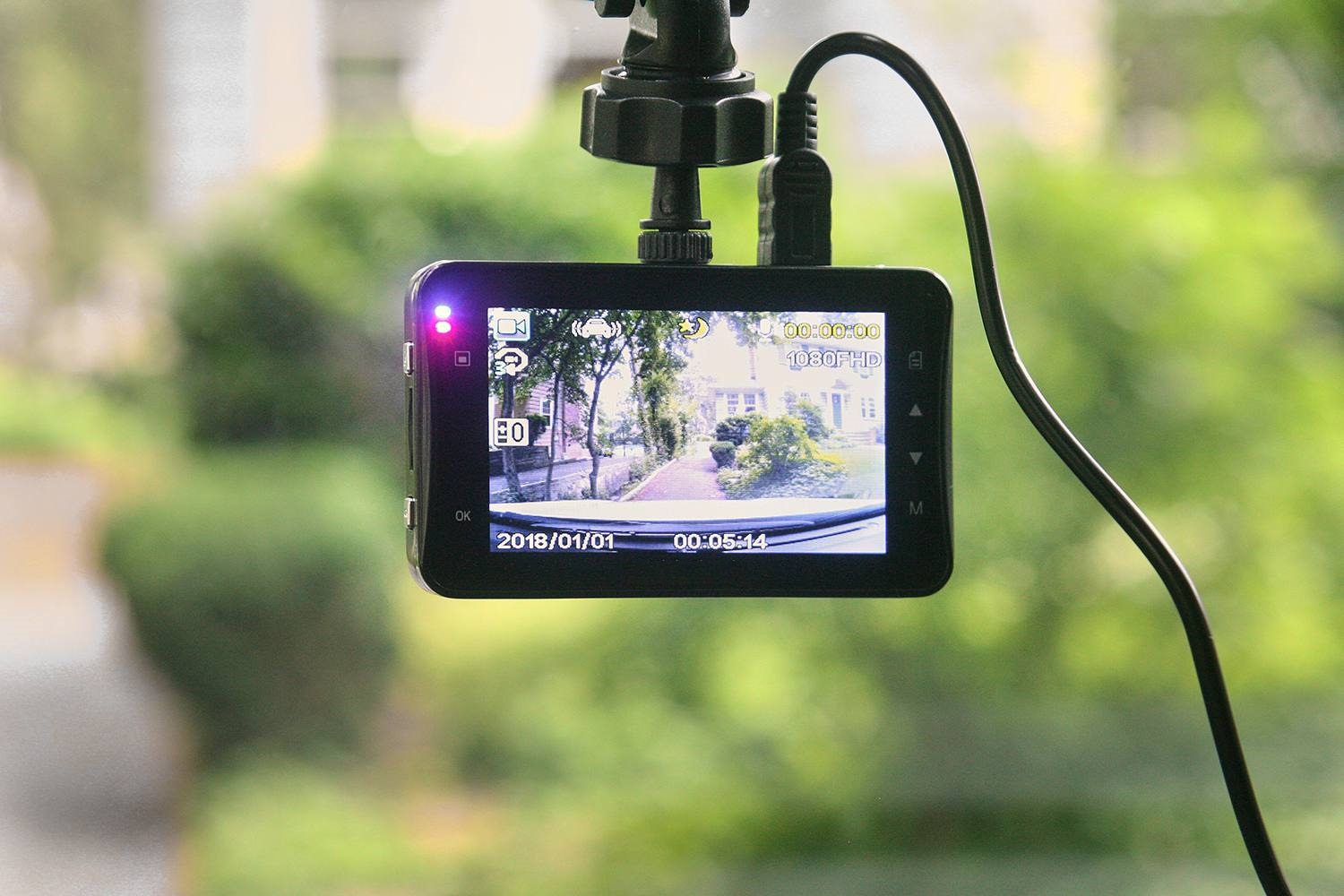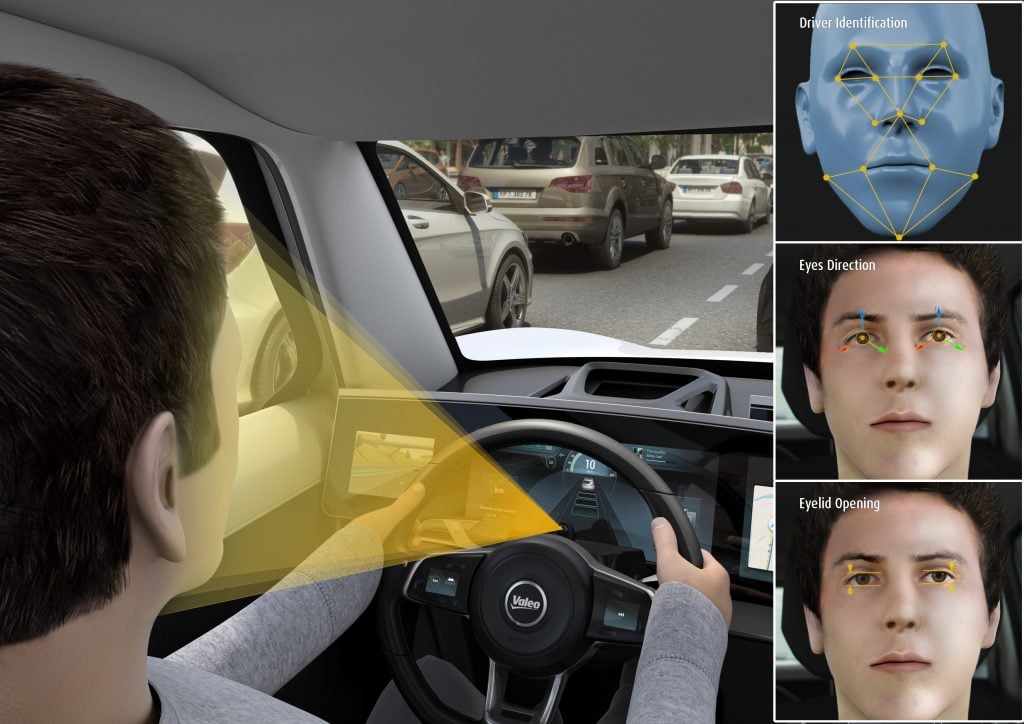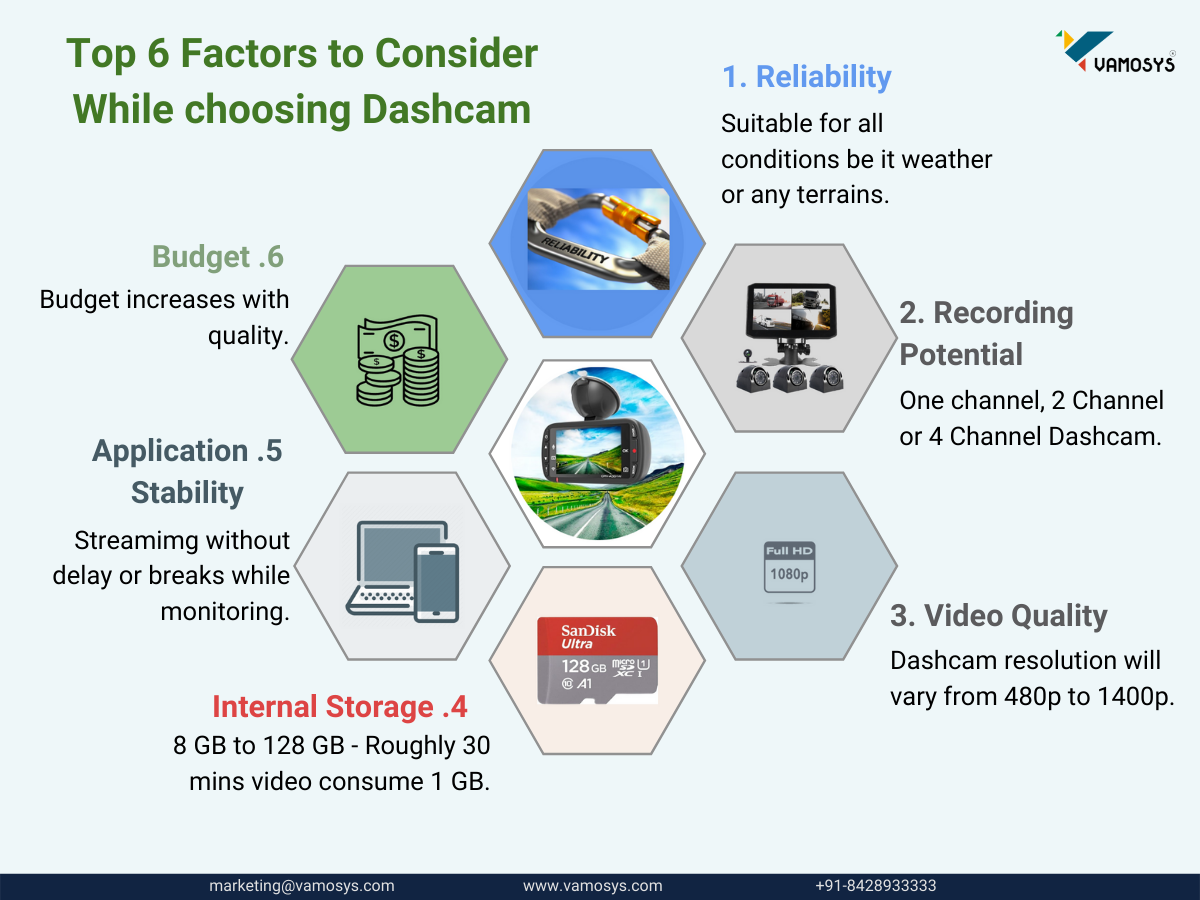How to Choose a Dash Camera for Your Vehicle
Summary
Dashcams are becoming increasingly popular in the logistics industry for improving driver safety and monitoring vehicles.
To choose the right dashcam, logistics operators should consider factors such as camera range, recording speed, temperature withstand capability, mounting structure, built-in screens, and emergency sensors. Dashcams are useful for emergency situations and driver monitoring, which can help improve the overall welfare of the industry.
Driving vehicles on roads is becoming risky with the increasing population of both people and vehicles. To ensure safety various sectors are working on different parameters be it life-saving balloons, increased protection to vehicles from being damaged, tracking of vehicles and a lot more safety measures are getting implemented.
Be it personal driving of vehicles or public goods carriers or public transportation, safety measures need to be kept in mind especially for drivers. Because drivers are the key person, the transporters should have regular monitoring measures to improve driver safety and vehicle safety to run a successful business in the transportation sector.
In the current digital world, the logistics and transportation industries have already taking advantage of telematics technology to improve the operations from basic vehicle tracking to tracking vehicles, ETA details from GPS software technology. On the same lines to improve operational management from fuel management using fuel monitoring solutions, trip management from transport management softwares, the advent of technology has revolutionized the logistics industries.
To ensure driver safety and better vehicle monitoring the recent sensation in the logistics industry is fleet dashcam. On installing the dashcam on vehicles such as trucks, trailers, containers and on any load vehicles, the transporters want to ensure the safety of vehicle, load and drivers to improve the safety standards along with organisational reputation.
So, to through some light on the dashcam, we have come up with some detailed insights on understanding the role of dashcam in vehicle, how the logistics operators should choose the right dashcam for their vehicles and needs, all such details is discussed in this article.
Lets start!
Understanding basics about Dashcam before choosing
Camera range-wide angles
The camera used in the dashcam fixed on the windshield of the vehicles covers the range from 140 degrees in certain dash cameras and it may go up to 170 degrees in a certain variants of dashcams.
So, as a user or logistics operator if you wish to cover a wide range view to record the happening before the vehicle, then the dashcam should be chosen wisely.
Camera recording speed
The normal camera speed, in general, will be 24 FPS (Frames per second), this applies to the vehicle dashcam to record the incidents occurring on and around the vehicle.
Since the camera will be streaming happenings live and at the same time the incidents will be captured from the moving vehicle. In this case, the ideal recording speed of the dashcam is recommended at 30 fps.
Depending on the price of the dashcam the quality of recording will decrease, this may affect the quality in recording.
Temperature withstanding capability
Before purchasing the camera for a vehicle, i.e. dashcam, the user needs to check the operating temperature of the camera. Certain cameras can’t withstand both heavy heat and cold.
Depending upon the geographic terrain the vehicle travels, the logistics operators should purchase the dashcam to withstand the temperature, so that, the installation will be effective and ensure safety.
Mounting structure on the vehicle
The requirement will vary according to the vehicle type and usage type, if the vehicle needs permanent mounting then the transporter can opt for the permanent adhesive type dashcam for the vehicle.
In certain cases, there will be a need of fixing the dashcam on the vehicle for a temporary period, because of certain circumstances, for that, the dashcam should support fixing and removing type without affecting the vehicle structure.
Build-in screens on dashcam
In market, there are dashcams with build-in screens, so that the driver and cabin team can view the live streaming of the recording happening on the vehicle.

Emergency Sensors
Dashcam provides emergency sensors and SOS alerts to the drivers in emergency situations. In case, if there is any collision with the vehicle, the emergency sensor on the dashcam will raise alerts to the vehicle operators.
Similarly, in case of an emergency, the driver can send emergency alerts by pressing the SOS alerts on the vehicle, which will raise emergency alerts to the fleet operators.
Why do you need dashcams in vehicles?
For emergency situations
Installing dashcam on vehicles may come in handy in emergency situations where there is some accidents or harsh driving occurred on the road while the vehicle is on the trip. The fleet manager or logistics operator managing the vehicle can guide and instruct the driver.
Apart from that, there is a certain variant of dashcam where the transporter and driver can interact mutually with the aid of installed dashcam on the vehicle.
If the driver is facing an emergency or be it medical attention, the driver can raise the alert to the fleet manager using the SOS alert button and the fleet manager can interact with the live visual footage to address the demands of the drivers.
In all such emergency situations, the dashcam with live streaming along with GPS tracking will be useful for the transporters to handle the crunch situations that occur on roads.
Driver monitoring

One of the major factors for installing the dashcam on vehicles by transporters is to monitor the driver’s behaviour while driving on roads.
As we all know, the driver is the main pillar in the logistics operations and almost the entire logistics operations revolve around the driver. So it is important to ensure the safety of the drivers for the betterment of organisation and the overall welfare of the industry.
In most of the instances without installing the dashcam, most of the things will be assumptions and with no or minimal proof. With the installation of a GPS vehicle tracking system, the transporters were able to get some vital information from GPS trackers such as harsh braking, overspeeding and other data that are available in GPS devices.
But again, it paved the way for improvement but the actual driver behaviour is not monitored, to achieve that, the dashcam will play the key role. As the transporters can see the live streaming of cabin view with every detail that driver does while driving, if the driver is smoking, eating, or having drowsiness it all can be monitored with the dashcam.
Based on the input from the dashcam the fleet manager can have strong evidence if in case if the driver needs any improvement. The training sessions can be arranged for the drivers to improve their performance and safety using the installed dashcam on the vehicle.
There are dashcams with ADAS (Advanced Driver Assistant System), which will alert the driver on certain circumstances where the driver needs to be alerted, say, for example, if the driver feels sleepy or tired, the ADAS dashcam will identify the circumstances and alert the driver. Based on the alert messages the driver needs to react to improve the safety measures and standards.
Real-time vehicle visibility
On installing the vehicle dashcam the transporter will have real-time vehicle visibility along with the GPS location.
The fleet managers can easily monitor the vehicles under his control using the software application with live streaming, similar to the installation of CCTV cameras on the shops and places.
Along with the live streaming, the dashcam recording footages can be stored both in cloud and SD card local storage. If in case, the card got damaged, the fleet operators need not to worry about the recording as it will be stored in cloud and it can retrieved and downloaded any time.
Insurance claims and Accident proofs
Dashcam is the perfect material for vehicle insurance claims and in accident scenarios.
In the current era, we all blame the truck drivers and logistics operators in the accident cases, but the actual truth would have been different. Because of lack of evidence and fear factor of drivers will cause an extra financial burden on the logistics operators.
In case of installing the dashcam, the recorded footage with time stamp, GPS location and voice recording can be provided as proof of evidence before the law and also claim the insurance of vehicles on damage done by others.
Improved safety and tracking of the consignment to the customer
The dashcam bring enhanced safety measures to the logistics operators and drivers operating the vehicles.
Safety is of the utmost importance for any business or industry, in logistics, it is prime since it involves the lives of people and goods caring value on the vehicle. On installing the dashcam on the vehicle with multiple channel dashcam, the fleet operators can monitor the real-time tracking of the driver’s cabin, road view and vehicle side (if needed) and consignment tracking with an additional channel of the dash camera.
Top 6 Factors to consider while choosing Dashcam

1. Reliability
Before choosing the dashcam for your vehicle, the first and foremost aspect the transporter needs to ensure is the reliability of the dashcam. The dashcam is the device that is going to get installed on the vehicle and it will be travelling in tough conditions be it weather (hot or cold), terrains (valley, plains, mountains, or any rough terrain).
The next important aspect is user reviews for the dashcam products as some of the dashcams may be priced heavily with low-quality cameras. Also, ensure the warranties provided by the manufacturer, so in case of any physical damage, there is replace for the dashcam or not.
Investing on a dashcam is important but for that, the reliability of the dashcam plays a key role, the dashcam pricing may range from 50$ to 600$ but one cannot justify the quality of the product based on pricing alone.
2. Recording potential
In logistics and transportation, the requirement of a dashcam will vary depending on the vehicle and consignment carrying in the vehicle.
If it is just to monitor the driver behaviour, the logistics operator can opt if 1 channel dashcam, which will record and stream live footage on the software application.
In certain instances and for insurance claims, the logistics operator may need to install two-channel dashcam with both road and cabin view by fixing the dashcam on the vehicle windshield.
For certain logistics operations, say pharma goods, security demanding transportation such as money carrying vehicles, or for that matter, if there is a demand to have regular monitoring of the consignment, the operators can choose the 4 channel dashcam, where the external camera can be fixed on the vehicle as per the requirement.
So choose wisely the dashcam based on recording potential and dashcam channel models depending upon the need.
3. Quality of video clips
When it comes to cameras, we always strive for video quality and image quality.
The same logic applies while purchasing the dashcam for the vehicle. The video quality is important in case of accident recordings as we need to record the number plate details and other aspects will be depending on camera quality.
The dashcam resolution will vary from 480p to 1400p, but it is wise to choose the dashcam over 1080p, as it provides better quality of images and video clippings.
Upon choosing the high-quality dashcam according to that the video storage will be increased as file size becomes larger, which is our next factor to decide the dashcam follows.
4. Internal Storage
The memory card is the most important aspect in choosing the dashcam, the video quality is important only if it is stored and recorded properly on the memory card.
In the memory card, there are variants to record the video captured, which is called as writing speed of the memory card. Generally, the memory is classified as Class 2, 4, 6, 8 and 10, it signifies the writing speed of the card, class 2 memory card writes at the speed of 2Mbps and class 10 at 10Mbps.
It is recommended to choose the higher class range SD card for the dashcam to record the high-quality videos. The next aspect is the storage capacity if the storage capacity is low and the videos will not be stored on the SD.
To give a hint of how many hours of videos can be stored on the SD card based on the storage capacity provided below:
8GB card – 2-4 hours
16GB card – 4-8 hours
32GB card – 6-12 hours
64GB card – 10-20 hours
128GB card – 20-40 hours
5. Application stability
The next most important factor is the software application to stream the videos. The videos are streamed live, so for that, the application should be stable and stream videos without much delay or breaks while monitoring the vehicle on the dashcam software application.
So, before choosing the software, check for the reviews, user feedback and proper demo to opt for the best dashcam software.
6. Budget
It is very simple, if you have the minimal budget the quality is compromised and if you have a good budget you will get quality.
It is up to you to choose between low budget or high quality, it is very rare to get high quality at low budget.
The dashcam is emerging in the markets and it is addressing the demands of the logistics and transportation industries. If you want to install the dashcam on your vehicle, consider the above-mentioned factors in mind before finalizing your dashcam.
If you need any assistance and demo on Dashcam, you can reach us at marketing@vamosys.com or contact +91-8428933333.

